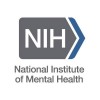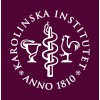
Behavior Therapy for Children and Adolescents With Obsessive-Compulsive Disorder (OCD)
Obsessive-Compulsive DisorderThe purpose of this study is to evaluate a behavioral treatment program for children and adolescents with OCD and their families. Exposure and Response Prevention (ERP) behavior therapy, in which the patient is gradually exposed to the object or situation that causes anxiety and is taught to refrain from responding in a compulsive manner, is combined with family counseling (Family Treatment Program). This treatment will be compared to Relaxation Training (RT). OCD is a long-term, often disabling disorder that can cause significant family disruption. ERP is a promising treatment for children with OCD, and it is thought that family participation (through the Family Treatment Program) may be a helpful addition. RT is a common treatment for anxiety. Patients are assigned randomly (like tossing a coin) to receive either the ERP/Family Treatment Program or RT. Both treatments will be delivered over 12 90-minute outpatient sessions to youngsters and their families. All participants (patients and family members) will be assessed for treatment response each month during treatment, after treatment is finished, and then at 2 follow-up visits over the following 6 months. A child/adolescent may be eligible for this study if he/she: Has obsessive-compulsive disorder (OCD), is medication-free, and is 8 to 17 years old.

Randomized Controlled Trial of Standard ERP and OC-Go
Obsessive-Compulsive DisorderPhase II of this study will examine the efficacy of the OC-Go application via a randomized controlled trial comparing standard exposure and response prevention (ERP) treatment for pediatric obsessive compulsive disorder (OCD) to exposure/response prevention (ERP) augmented with OC-Go. A cross-over design will be implemented for these 12 sessions of treatment, in which participants that were randomized to standard ERP will receive OC-Go augmented ERP for the second half of treatment, and vice versa. Efficacy will be investigated in a sample of 32 children with OCD.

Deep Brain Stimulation in Severe Obsessive-compulsive Disorder
Obsessive-Compulsive DisorderDeep brain stimulation is an established treatment for movement disorders. New indications for deep brain stimulation are under investigation, among them severe and treatment-resistant obsessive-compulsive disorder. Here, the investigators investigate clinical outcomes, safety and mechanism of action of DBS in the BNST in a series of 11 participants with severe therapy-refractory OCD.

Efficacy of Intensified Transcranial Direct Current Stimulation in Obsessive-compulsive Disorder...
Obsessive-Compulsive SymptomThis is a randomized, double-blind, parallel-group, sham-controlled trial that aims to investigate the effectiveness of transcranial direct current stimulation (TDCS) on improving symptoms, quality of life, depression, and cognitive functions in 39 patients with obsessive-compulsive disorder (OCD) that are randomized in 3 experimental groups.

Neuromodulation Enhanced Cognitive Restructuring: A Proof of Concept Study
AnxietyDepression6 morePsychological treatments are effective, but take a long time and can be burdensome. Therefore, avenues to optimize behavioral treatments are needed. Despite important advancements, neuroscience has had a limited effect on psychotherapy development. Therefore, one paradigm shift would be to develop neuroscience informed behavioral treatments. The investigators identified from the literature a problem that affects several mental disorders (emotion dysregulation) and a neural circuit that underlies this important concern. They found that this circuit is dysfunctional in those with psychopathology but can be changed with treatment. The goal is in one session to train this brain network to operate more efficiently and to test the short and long term effects of this intervention. The investigators plan to engage this brain network using a traditional psychotherapy strategy (cognitive restructuring) and to enhance learning using repetitive transcranial magnetic stimulation (rTMS), a neuromodulation technique through which magnetic stimulation enhances the electrical activity in brain areas close to the scalp. The study team proposed two studies to examine this novel approach, In one of the studies 83 participants were enrolled and 47 eligible participants were divided into 3 groups. All participants were trained in emotion regulation by first being asked to remember an event where they experienced a negative emotion and then being instructed either to think differently about the event, or to wait. Participants simultaneously underwent either active (left or right side of brain) or sham rTMS. In a second study 65 participants were enrolled, and 31 were assigned to either active left or sham rTMS guided using neuroimaging results. Across both studies, the investigators measured regulation in the lab and during a-week long naturalistic assessment. Participants in the second study returned for a follow up neuroimaging visit at the end of this week. Participants returned for a one moth follow up assessment and to rate feasibility, acceptability, and provide feedback. This proof of concept set of studies demonstrated feasibility and preliminary efficacy for this approach, which opens new frontiers for neuroscience informed treatment development.

N-acetylcysteine (NAC) for Pediatric Obsessive-Compulsive Disorder
Obsessive-Compulsive DisorderPediatric Obsessive-Compulsive Disorder (OCD) affects 1-3% of children. The investigators currently have effective first-line interventions for pediatric OCD such as Cognitive Behavioral Therapy (CBT) and pharmacotherapy with serotonin reuptake inhibitors (SRIs). However, roughly half of children with OCD still have clinically significant OCD symptoms despite treatment with first-line pharmacological treatments and CBT interventions for OCD. Furthermore, all pharmacological treatments for OCD in children have an increased side effect burden when compared to adults. Novel treatments for children with OCD are needed. N-acetylcysteine (NAC) is a natural supplement that acts as an antioxidant and a glutamate modulating agent. NAC has been used safely for decades in doses 20-40 times higher than in this trial as an antidote for acetaminophen overdose. The only side-effect commonly seen with NAC is nausea and this side-effect is seldom seen in the doses used in this trial. NAC has recently been demonstrated to be effective in a double-blind, placebo-controlled trial in adults with trichotillomania (chronic hair pulling). Trichotillomania is an obsessive-compulsive spectrum disorder that is hypothesized to be closely related to OCD. In other trials NAC has evidence of some efficacy in treating diverse psychiatric conditions such as bipolar depression, schizophrenia and cocaine dependence. The investigators are conducting this trial to determine if NAC is effective in treating OCD.

Internet-based Cognitive Behavior Therapy (CBT) for Obsessive Compulsive Disorder (OCD)
Obsessive Compulsive DisorderCognitive behavior therapy (CBT) is an effective treatment for obsessive compulsive disorder (OCD) but there is a lack of properly trained CBT therapists. One possible treatment alternative is Internet-based CBT (ICBT) with minimal therapist input. The aim of this study was therefore to evaluate ICBT for OCD.

Internet Cognitive Behavior Therapy (CBT) for Obsessive Compulsive Disorder (OCD)
Obsessive Compulsive DisorderThe main aim of this study is to test whether cognitive behavior therapy could be effective in treating obsessive compulsive disorder. Here, the investigators test the in group effects of a 15 week long treatment delivered via the Internet for residents in Stockholm County.

Developing Adaptive Treatment Strategies for Children and Adolescents With Obsessive-compulsive...
Obsessive-Compulsive DisorderObsessive-compulsive disorder affects approximately 2% of the population, frequently has its onset during childhood or adolescence and is potentially incapacitating. If not properly treated, this disorder tends to follow a chronic course. Pharmacotherapy with clomipramine and selective serotonin reuptake inhibitors (SSRIs), such as fluvoxamine, fluoxetine and sertraline, has been approved for pediatric OCD. However, up to 30% of patients may not benefit from these treatments, and the presence of residual symptoms is frequent among treatment responders. Cognitive-behavioral therapy (CBT) is also recognized as first line treatment for pediatric OCD, either administered in individual or group format. There is evidence suggesting equivalent efficacy for SSRIs and CBT in pediatric OCD, but there is no data on adaptive treatment strategies regarding such treatments on the long term outcome of OCD patients. The aim of this study is to verify, in a randomized design, if there is an optimal sequential treatment strategy for pediatric OCD, adopting the two most studied treatments for this disorder: an SSRI and group CBT (GCBT). The investigators hypotheses are: (1) both types of treatment will present similar efficacy in the short term (14 weeks); (2) for non-responders to the first type of treatment (fluoxetine up to 80mg/day or GCBT for 14 weeks), combined treatment (fluoxetine + GCBT for another 14 weeks) will be more effective than switching treatment modality (from fluoxetine to GCBT or from GCBT to fluoxetine for additional 14 weeks) after additional 14 weeks.

Ondansetron in Treatment Resistant Obsessive Compulsive Disorder (OCD)
Obsessive Compulsive DisorderGiven that 5-HT3 receptors are indirect inhibitors of cortico-mesolimbic DA release, the 5-HT3 receptor antagonist ondansetron augmentation might potentially have efficacy in the treatment of resistant Obsessive Comulsive Disorder (OCD) patients on combined SRIs and antipsychotics.
